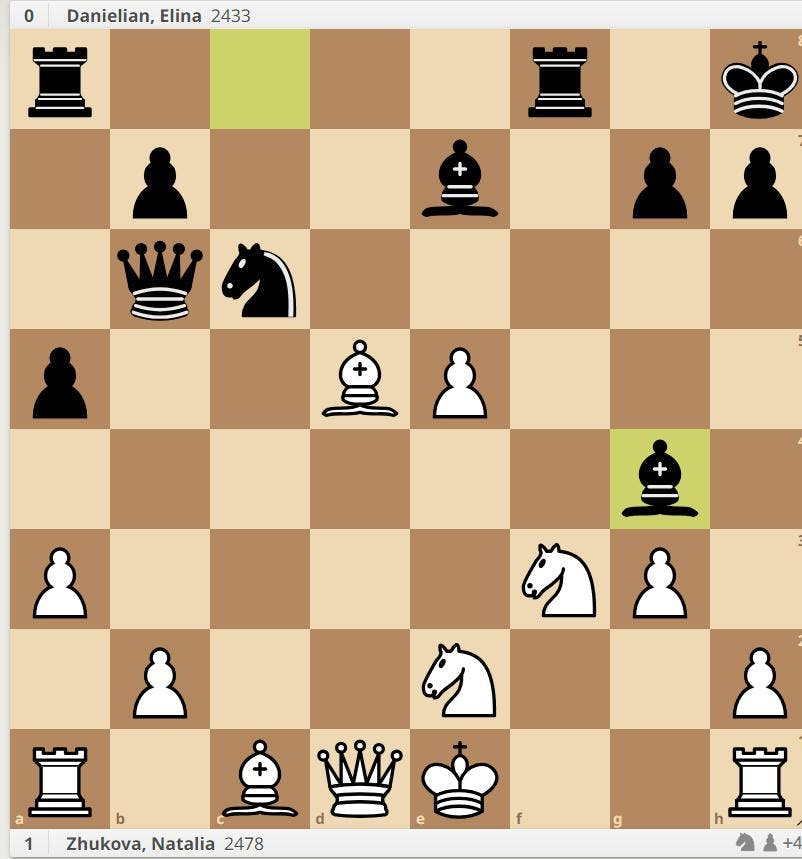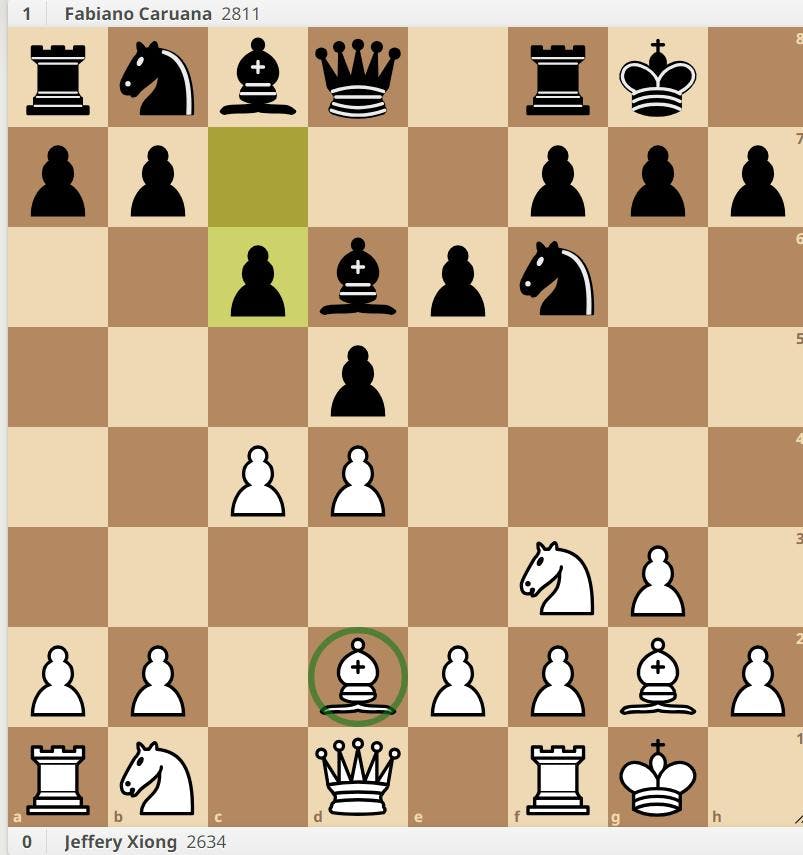
1. Two different paths converge

2. From Catalan to Stonewall Dutch
Transposition occurs when the same position arises from two or more different sequences of moves. It most typically occurs during the early middlegame when the same position can arise from different initial openings.
Position 1 (Zhukova - Danielian, 2005) was reached via 1.e4 e6 2.d4 d5 3.Nc3 Nf6 4.e5 Nfd7 5.f4 c5 6.Nf3 Nc6 7.Ne2 Qb6 8.c3 Be7 9.a3 a5 10.g3 cd 11.cd f6 12.Bh3 0-0 13.Bxe6+ Kh8 14.Bxd5 fe 15.fe Ndxe5 16.de Bg4. But it also occurred in Ivanov - Adu, 2001, via a sequence instead beginning 1.e4 e6 2.d4 d5 3.Nd2.
In position 2 (Xiong - Caruana, 2018), the game started 1.d4 Nf6, as if heading for an Indian defence, but after 2. Nf3 d5 3. c4 e6 switched to a potential Queen's gambit, before then clarifying itself to be a Catalan with 4.g3, only for black to turn it, finally, into a kind of Stonewall dutch with 4... Bb4+ 5.Bd2 Bd6 6. Bg2 0-0 7. 0-0 c6. (This is a clever move order that gives black a Stonewall where the white bishop is slightly awkwardly placed on d2.)
It helps any player to be aware of the typical transpositions between openings and early middlegames, as, should the opportunity arise, the informed player may steer confidently towards a position familiar to them - but perhaps not their opponent - via a different move order than usual.
See also: "Tension"
